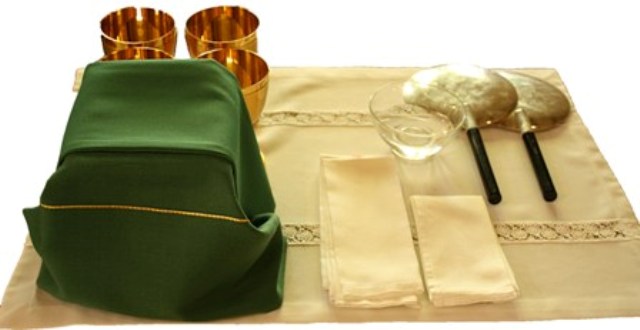The History of the Ministry
Although the role of the modern sacristan developed from the teaching of the Second Vatican Council, that all members of the Church should: “be led to take that full, conscious, and active part in the liturgical celebrations which is demanded by the very nature of the liturgy ... in the restoration and development of the sacred liturgy the full and active participation by all the people is the paramount concern” (Constitution on the Sacred Liturgy, 14) it can be argued that sacristans have been with us since the beginning. If the role of the sacristan is to prepare what is needed for the celebration of the Mass, and if the Last Supper was the first Mass, then the first sacristan was the person who arranged the cups and dishes on the table before Jesus and the disciples arrived.
Since the Second Vatican Council the role of the contemporary sacristan in the life of the parish has been an active one involving creative skill, liturgical knowledge, organisational abilities and diplomacy. The sacristan emerged from his/her domain, the sacristy – which had been seen as little more than a cross between a store area and a dressing room with the sacristan as its caretaker – to become a minister in his/her own right and a member of the liturgical team.
Now more than a keeper of candle wax, the sacristan became someone who knew the purpose and meaning of the liturgy as well as the needs of the liturgical assembly, giving the members the tools that they needed when they needed them and keeping a watchful eye on the house of God and the liturgical environment.
The Nature of the Ministry.
As a sacristan you will need to have a practical approach to everything that you do – and the duties will indeed be various and varied. The ministry is more about being Martha rather than Mary, a practical, hands-on service that requires organisational skills knowing not only what the Church uses in its various liturgies but also where these items are kept so that these can be organised and used to their fullest potential within the liturgical life of the parish. A sacristan works as a member of a team, not only with his/her fellow sacristans but also with the parish clergy, altar servers, lectors and extraordinary ministers, and through these developing relationships and the preparation for the various liturgies helping yourself and others develop their relationship with God.
I am interested in this ministry - what will it involve me doing?
As a sacristan you will be asked to arrive at least twenty minutes before the start of Mass or other service and to prepare whatever may be needed for its celebration – a list and guide of what to prepare will be provided. The smooth celebration of any Mass will depend on everything being in place beforehand. As with the carrying out of all ministries, if done well, as the minister decreases, Jesus Christ increases and God is glorified in all that we do in His name. During the celebration of the Mass, if there is no altar server present, you will be asked to ring the bell at the consecration and to remain on hand after Mass to clear everything away.
Further reading:
Christina Neff (2001) - Guide for Sacristans. [The Basics of Ministry Series]. Chicago. Liturgy Training Publications.
G.Thomas Ryan (1993) - The Sacristy Manual. Chicago. Liturgy Training Publications.
Catholic Bishops' Conference of England and Wales (2002) - General Instruction of the Roman Missal. London. Catholic Truth Society (PDF file).
Catholic Bishops' Conference of England and Wales (2005) - Celebrating the Mass; a pastoral introduction. London. Catholic Truth Society. (PDF file)
Peter J.Elliott (2005) - Ceremonies of the Modern Roman Rite; the Eucharist and the Liturgy of the Hours. Second edition. San Francisco. Ignatius Press.
Peter J. Elliott (2002) - Ceremonies of the Liturgical Year according to the Modern Roman Rite. A Manual for Clergy and All Involved in Liturgical Ministries. San Francisco. Ignatius.
